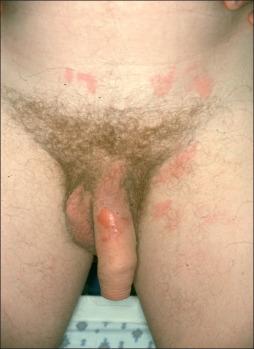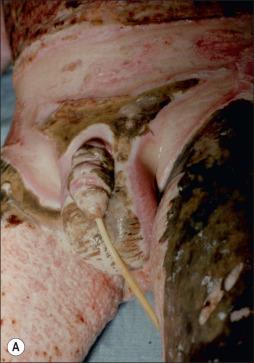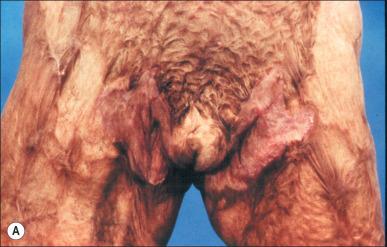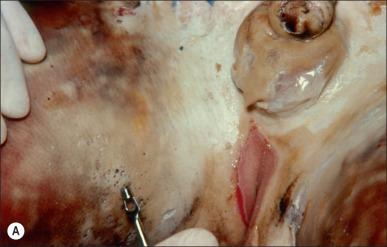Physical Address
304 North Cardinal St.
Dorchester Center, MA 02124
Burns of the perineal area are relatively uncommon despite the common involvement of the lower trunk and the lower extremities in burn injuries. The incidence of perineal burns was reported at around 12/1000 admissions more than 25 years ago. While the occurrence of perineal burns has remained at around 1.0–1.5% at our institution, 35 children underwent genito-perineal reconstruction out of 1133 presenting with perineal burns between 2002 and 2009.
The continuous improvement in the survival rate following extensive burns of total body surface area (TBSA) more than 40% could account for the increase in the number of patients requiring secondary reconstruction.
A conservative approach is usually the first line of management of perineal burns during the acute phase of admission. The perineal area is cleansed daily with appropriate antiseptic and the wound is covered with antibiotic topical dressing. To avoid urine contamination of the burn area and the development of urethral strictures, the urethral tract is stented using an indwelling Foley catheter. The catheter is also used to decompress the urinary bladder and monitor urine output during the acute admission. The perineal area is neither splinted nor braced, the thighs are maintained at 15 degrees of abduction using a wedge splint to minimize hip contractures.
Other complications of perineal burns presenting during the acute injury phase include penile shaft necrosis, testicular necrosis, urethral stricture, and rectal prolapse. Although the Shriners Children Burns Hospital and the University of Texas Medical Branch Hospitals in Galveston, Texas, have adopted conservative management of perineal burns, the approach to wound care is, in practice, quite variable. The management plan is often modified depending on the anatomical structures involved in individual patients.
The burn is left to demarcate over time with the wound left to heal by secondary intention. Non healing wounds are reconstructed using partial-thickness or full-thickness skin grafts. On rare occasions, a local skin flap may be utilized from the adjacent normal skin to reconstruct full-thickness skin defects of the penile and scrotal areas.
Burn injuries limited to the penis, although possible, are quite rare ( Fig. 55.1 ). Concomitant involvement of the penis with burn injuries of the lower trunk and the perineal area, on the other hand, is quite common. Initial patient management, in addition to resuscitative measures, consists of wound care and urethral stenting. As mentioned earlier, an indwelling Foley catheter of appropriate size is inserted to stent the urethral tract and monitor urine output.

The catheter is removed once the swelling around the penile shaft has subsided and the wound status is delineated. No attempt is made to débride the burn wound early; the wound is left to demarcate and heal by secondary intention.
Spontaneous healing is expected in most instances of burn injuries to the penis and scrotum since full-thickness injury of the penile and scrotal skin is relatively uncommon. Skin grafting, with a partial-thickness or full-thickness graft, could be used to cover the wound when healing is delayed ( Fig. 55.2 ).

In rare instances, a skin flap is required to reconstruct structures such as the urethral tract and/or scrotal sac because of full-thickness skin loss. An inguino-pudendal skin flap mobilized from the inguinal crease area may be used if the use of a skin graft is judged not to be feasible. The use of musculocutaneous flaps, such as a gracilis flap, is not recommended. The subsequent high tissue temperature developing in the skin paddle of the flap can potentially interfere with spermatogenesis.
Isolated burns of the labial area are rare, and such burns are often associated with injuries of surrounding areas such as the abdomen and inguinal folds. As in the management of burns of male genitalia, the injured areas are left to heal by secondary intention ( Fig. 55.3 ).

Distortion of the labial structures mostly due to scar contraction in the pubic and inguinal areas is addressed by reconstruction at a later stage.
An isolated burn injury of the perineal area is, as mentioned earlier, extremely rare; nevertheless the perineum will be involved in extensive lower trunk/buttock burn injuries. The extent of scar contraction following wound healing will vary per the depth of burns. While the wound may heal spontaneously with residual minimal scarring, perineal contractures are a common sequela regardless of the methods used for wound care ( Fig. 55.4 ).

The natural inclination of patients to adduct the thighs and hips while lying supine in bed during the recovery phase of acute burn injuries seems to aggravate scar contraction.
Become a Clinical Tree membership for Full access and enjoy Unlimited articles
If you are a member. Log in here